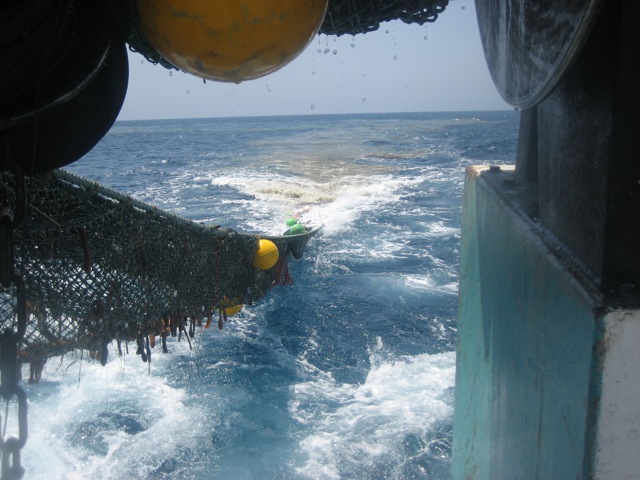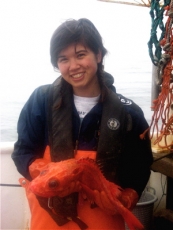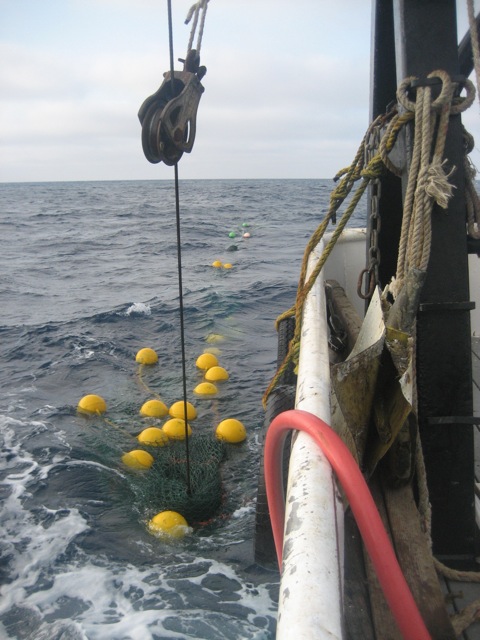

by Erin Loury, Ichthyology Lab
I’ll admit, the prospect of spending ten days at sea aboard a 60 foot fishing vessel to do a fish survey had me a bit nervous. The conditions in sunny southern California are nothing to rival the Bering Sea storms that Nate Jones blogged about – but even so, there can be tense moments. The day I have in mind was while we were trawling off the coast of San Diego. The continental shelf is very wide in this area, and we were miles from shore on the continental slope. With nothing but water all around us, we were reeling in our long net when suddenly it wouldn’t budge any further. We were stuck.
Our lead scientist and the fishing crew deliberated our choices. We could cut the net, which would involve a considerable loss of money, and any further sampling would literally be cut short. We’d have to return to port early, and our survey would be over. Or they could try to salvage the net, although how to do so without any help in over a thousand feet of water was beyond me. Unable to contribute any useful skills or advice to the situation, I curled up and took a nap. The crew later said they were impressed that I seemed unperturbed by the whole situation. But in reality, sleeping was my best way to avoid thinking of that fact that I was bobbing in a tiny boat effectively pinned to the bottom of the sea.

The crew’s strategy to free us from our deep-sea snare turned out to be straightforward: it involved letting out one side of the net, then reeling it in as they let the other side out. This alternating dance of pull and release essentially rocked the net back and forth, attempting to shake it from the grip of whatever underwater ledge or rocky outcrop had us snagged.
After about three tense hours, it worked. With a sigh of relief and a tinge of sadness, I welcomed our tattered net as it limped back to the surface, a messy tangle of floats and line. Once it was aboard, the crew set about mending the tear. I’m fascinated by the historic artistry involved in “sewing web,” as the mending of the net is called. I have to say I was not a quick study in the skill, but my fellow scientist Melanie was an old hand at it. Consider it just another a job hazard in the world of fishing.


